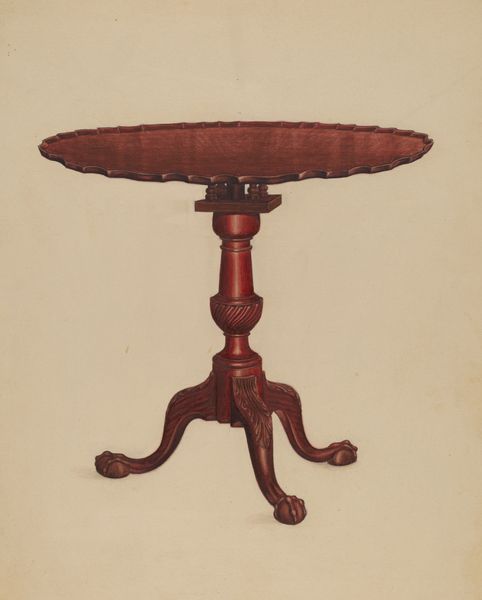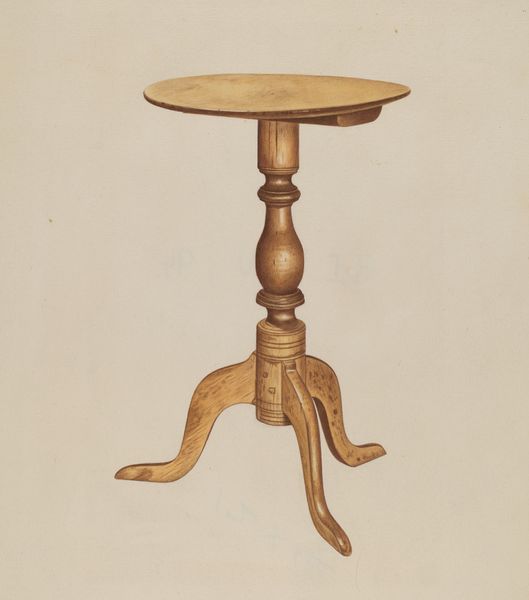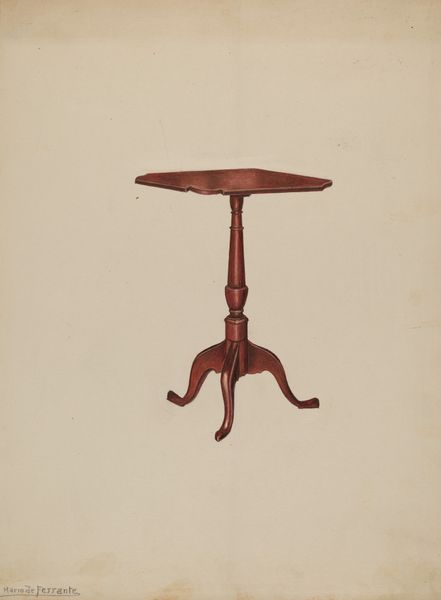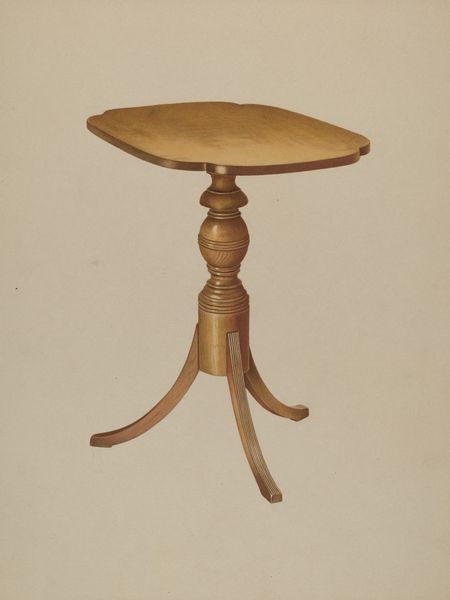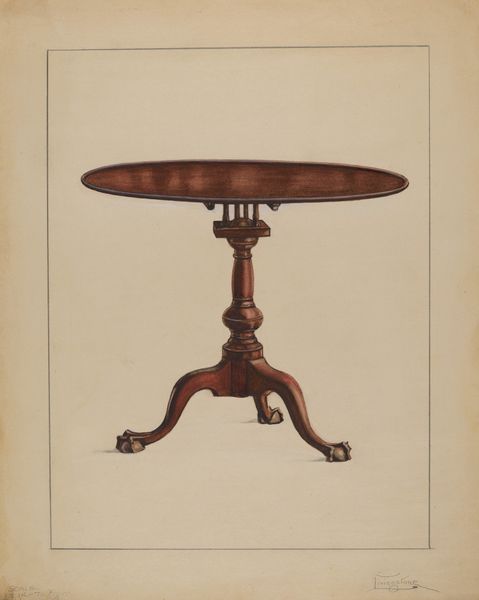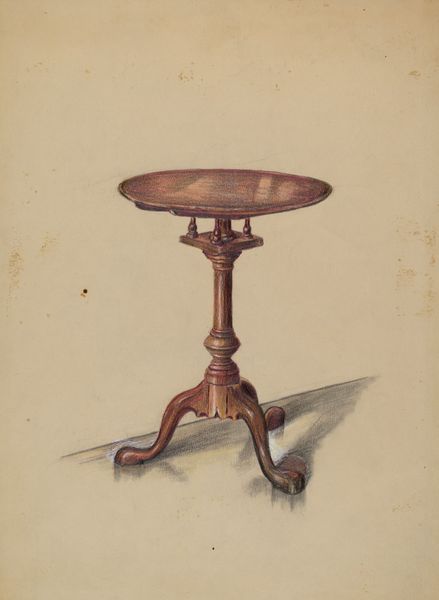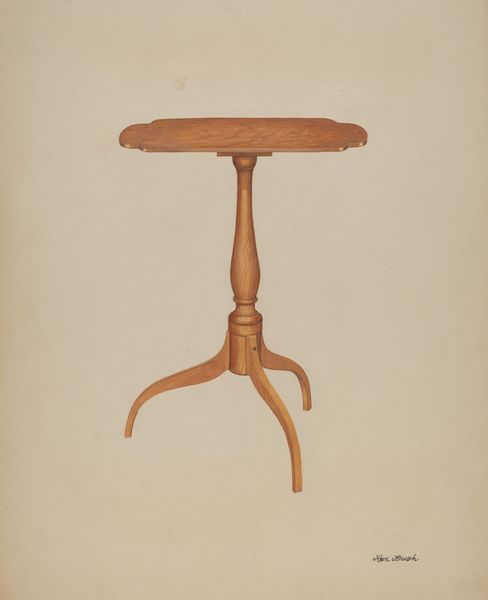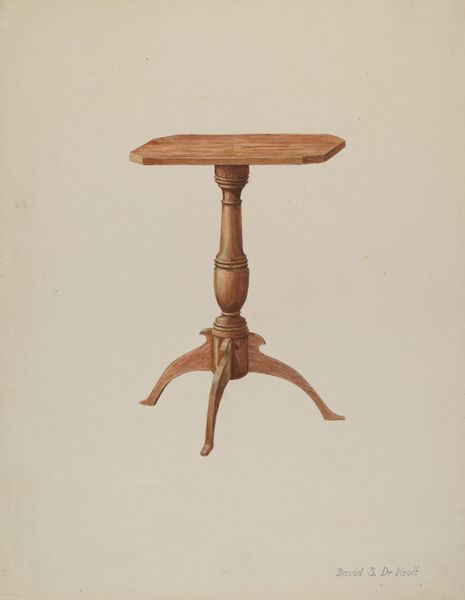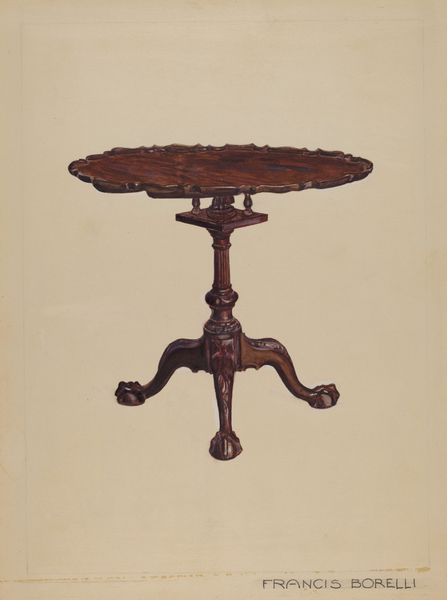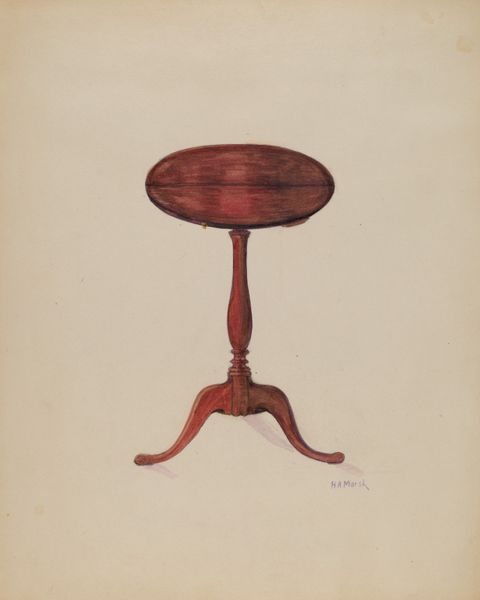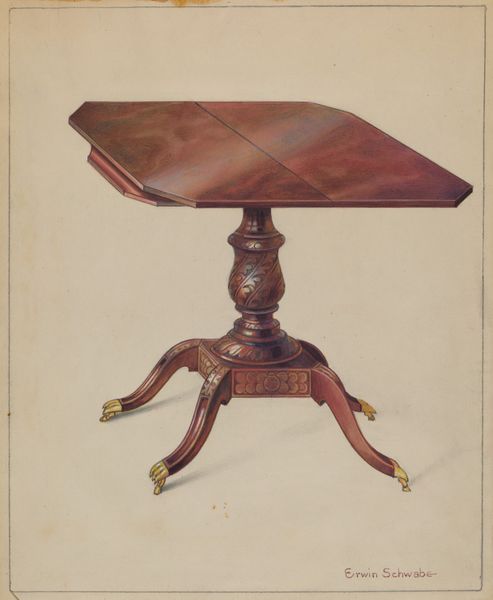
drawing, painting, watercolor
#
drawing
#
painting
#
perspective
#
watercolor
#
watercolour illustration
#
academic-art
#
watercolor
Dimensions: overall: 28.1 x 21.2 cm (11 1/16 x 8 3/8 in.) Original IAD Object: 28 1/4"x21 1/2"
Copyright: National Gallery of Art: CC0 1.0
Editor: Here we have "Tripod Table," a watercolor and drawing by A. Zaidenberg, from around 1936. The details on the carved legs and the rim of the tabletop are impressive. It has a formal quality to it, a sort of studied elegance. What stands out to you about this work? Curator: The formal elegance speaks volumes, doesn’t it? Even in its rendering. But the table itself, even divested of surrounding objects, functions as a symbol of domesticity and social interaction. Think of all the conversations, agreements, and meals that have taken place around similar tables. It becomes an anchor, a silent witness to our lives. Editor: I never considered it in that way, as more than a depiction of a nice piece of furniture. The idea that it's an anchor for experiences… How does the choice of watercolor affect that symbolism? Curator: Watercolor brings a certain fragility. Unlike the solidity of oil paint, it hints at the ephemeral nature of those moments. Also, consider the animalistic feet. The three feet suggest something primal underpinning our civility, or even implying movement where you’d expect stability. Is it grounding, or something more unstable? Editor: That’s a great point. I was focusing so much on the tabletop that I almost missed the feet! Is it odd to suggest a table has a sort of posture? Curator: Not at all. We imbue objects with meaning. This table seems almost poised, waiting. These clawed feet, often called ‘ball and claw’ were designed by Europeans to echo a mythical past in the West, to attach themselves to heraldry and status. It gives a sense of ancestral heritage and pedigree to a seemingly humble object. Editor: It is much more loaded than I first imagined. It’s interesting to consider how everyday objects carry all of this cultural baggage with them. Curator: Indeed. The visual language speaks, even when we aren't fully conscious of the conversation. And the beauty is that different people will read that language in different ways.
Comments
No comments
Be the first to comment and join the conversation on the ultimate creative platform.

